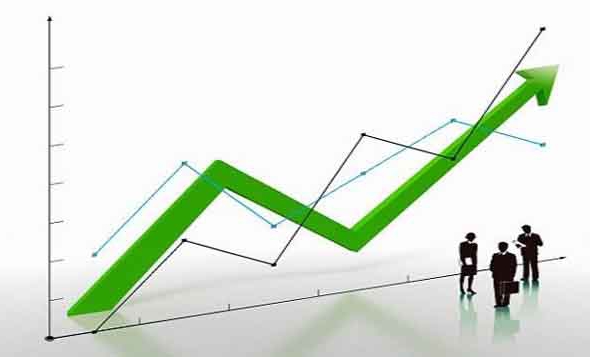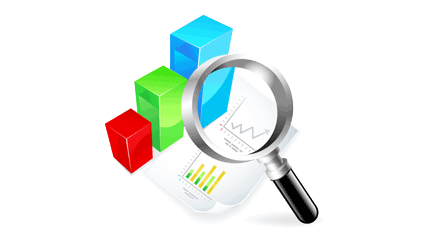Russian enterprises, by virtue of legislative requirements, may have obligations to provide various types of reporting to state bodies - in particular, accounting. Drawing up relevant documents may require the consolidation of significant volumes of internal resources. At the same time, many firms pay attention to the formation of specifically management reporting. Its submission to state bodies is optional, but many corporations form it, and this process may require no less effort from the company. Why does it make sense to apply them? What is the usefulness of the appropriate type of reporting?
The role of management reporting
What is management reporting and what is its role in the enterprise? This term refers to a set of internal documents that contain numbers that reflect various aspects of the company's business activities.
Management reporting, unlike, for example, accounting, is voluntary. It does not need to be sent to the Federal Tax Service and other government agencies. Its role is to provide the company management or its owners with reliable information about the state of affairs in the organization.

Management reporting can complement accounting or financial reporting in terms of generating data that is critical to optimizing a business model and increasing a company's profitability. The type of activity under consideration may also include non-financial information, which is important for the correct interpretation of the effectiveness of management decisions made by the company's management. The type of reporting under consideration is not valued for the fact that it contains impressive figures, but just the opposite - for the opportunity to detect flaws in the business model of the enterprise that impede successful growth.
Management reporting is an essential component of planning. The documents that form it include data that are of great importance for calculating the prospects for the implementation of certain decisions on management level. In turn, upon completion of one or another stage of the company’s development, the type of reporting under consideration will allow us to analyze at what points the management of the company should have acted differently and what it is connected with.
Benefits of Management Reporting
What fundamentally differ financial, accounting, management reporting? First of all, the methodology. The first two types of financial statements involve the collection of mainly statistical information that reflects the turnover of capital in certain areas of business processes. In turn, management reporting assumes not only the reflection of statistics, but also the interpretation of the corresponding figures. The management of the company will be able not only to observe certain indicators, but also to understand what they mean.
So, the organization’s management reporting can show the reason for the higher profitability in the production of specific types of products, or, conversely, what is the reason for insufficient revenue and too high costs for a particular business segment. The interpretation of the figures recorded in the management reporting allows the company management to make competent decisions regarding necessary purchases, updating fixed assets, modernizing equipment, etc.

Internal management reporting, provided that it is prepared in a timely manner, can timely identify those parts of the business process where the efficiency of the company’s employees is not high enough.
Management Reporting Content
What can be contained in the documents that make up the type of reporting under consideration? The fact is that sources of information of the corresponding type can be represented in the framework of a large number of varieties. As a rule, certain documents are adapted for specific managers. Reporting is called managerial mainly due to the fact that it is intended specifically for managers.
AT management structure modern organizations, as a rule, present the positions of the Director General, as well as his deputies. These may be: deputy for production, for sales, or, for example, for financial matters. In the first case, internal management reporting may include data relating to:
- the cost of products or services (in relation to specific varieties of products);
- characteristics of work in progress, production of goods and services in relation to orders from specific customers;
- the amount of production that goes to the warehouse;
- stocks of raw materials, materials or components that are involved in the release of goods.

If reporting is to be provided to the Deputy Director of Sales, then its structure may include:
- information about the sales structure in relation to specific types of goods and services, with specific customers;
- data on the dynamics of shipment of products;
- information about stocks in stock;
- data on the amount of costs for the sale of goods or for delivery to the consumer;
- planned indicators regarding the receipt of goods at the warehouse;
- information about receivables for positions sold.
If the reporting is to be submitted to the Deputy Director of Finance, then it may contain:
- information on the execution of the enterprise budget;
- information about the costs associated with economic activities;
- figures reflecting the cost of goods or services;
- profit and loss data;
Also, the reporting may contain information about the receivables and own debts of the company on loans and other obligations.
Management Reporting Frequency
How often should management reporting be done? It is desirable that information reflecting the indicated areas of activity of the enterprise does not become outdated for more than a week. In some cases, key indicators may be defined at a particular enterprise that will need to be updated more frequently. Similarly, management can fix secondary indicators, the preparation of which can not be spent a lot of time, and therefore such information can be provided much less frequently.

Reporting to shareholders
Experts in the field of business management recommend paying special attention to the preparation of reports intended for shareholders of the company. What is the specificity of the relevant communications?
The main feature here is that the company's shareholders may not take any part directly in the management of the company. It often happens that the only area of interest to them is net profit figures. Detailed management decisions in the reports provided to the company's shareholders are inappropriate in some cases. However, since the owners of the company are those who make key decisions regarding the appointment of top managers, it will be possible to reflect in the reports information characterizing the effectiveness of the work of the general director and his deputies.
What might reporting look like?
What are the forms of management reporting? We noted above that, unlike financial and accounting documents, the corresponding type of paper is, in fact, informal. Forms of management reporting are not regulated by law. Therefore, they can be developed by the organization based on the most appropriate structure - for example, depending on the addressee of the reports.

Perhaps it will be more comfortable for the deputy director of finance to deal with tabular documents, and the owner of the company with schedules that clearly show how profit changes depending on various factors. In some cases, the reporting forms in question can be very similar to those compiled in the collection of financial or accounting indicators
Reporting Procedure
How can documents of this type be formed? Reporting in question involves the solution of two groups of tasks.
Firstly, it is the collection of the necessary numbers. Their source is likely to be files generated by the accounting and production departments of the company in the course of current activities. For example, if a certain volume of goods was shipped to a warehouse, the corresponding data is usually recorded in the firm's CRM system. The data on other business activities carried out at the enterprise are similarly reflected.
Secondly, this is an interpretation of indicators collected at various production sites or presented in accounting figures. An analysis of management reporting is required. Its implementation, again, will depend on where exactly the relevant documents should be transferred. Moreover, in some cases, less detail is desirable, and in others, more detail on the indicators. Likewise, a lengthy interpretation of the results may be welcomed, or, conversely, extreme brevity is required.
In some cases, as such, the interpretation of the figures may not be necessary at all - for example, when it comes to reporting to an experienced CFO. Probably, he interprets the results better than any other manager, and he will have enough pure figures.
Reporting Algorithm
Consider how the formation of management reporting in practice can be carried out. Among Russian experts, an algorithm is popular that assumes the solution of the problem under consideration in the next stages.
First of all, it is necessary to find out what kind of information that makes up the statements that the general director, his deputies and owners want to see, and with what frequency. Someone may prefer to get acquainted with the figures on a weekly basis, for another it will be enough to see the key indicators once a month. It is also advisable for a future reporting compiler to find out at the very beginning of interaction with management what type of data will most likely be priority and which type will be secondary.

The next step is communication with the accountant to determine the algorithm in which a person engaged in solving the problem in question will request the necessary numbers. The reporting compiler can also interact with other company employees in those areas where indicators relevant to the required documents are generated. The company should form a management reporting system in which all competent employees will participate.
The next step is to create forms of documents in which, on the one hand, numbers will be recorded, and on the other, interpreted. At the same time, the person responsible for reporting may be faced with the need to create different forms of documents adapted for a particular addressee - the general director, his deputies, and owners.
The next steps will be related to practical reporting.If the enterprise is small, then, in principle, the person involved in solving the problem at hand can try to collect the necessary numbers himself. But it is likely that he will need the help of colleagues. In this case, the practical stages related to the collection of information may be preceded by some meetings at which the person will tell other employees about what are the basics of management reporting, for what purpose relevant documents are generated and why it is important for the company. Solving this problem can facilitate the management of the company through the publication of local legal acts requiring individual employees to promote the work of the person responsible for reporting.
Reporting Varieties
Having considered the key principles of management reporting, we can study individual varieties of the corresponding models for displaying numbers that reflect the activities of the enterprise.
The first type of reporting in question is the management balance. What are its features?
The managerial balance sheet, in principle, is similar to the accounting one. Its fundamental difference lies in its functional purpose. The management balance is intended not only to reflect the figures, but also to interpret them in terms of the effectiveness of the organization’s business model, the state of affairs regarding the organization’s assets, the company's obligations to partners and vice versa.
The figures, which include accounting, managerial, financial statements, can, in principle, be entered in the same forms. However, how the relevant indicators will be interpreted may predetermine the creation of documents in a completely original structure. It matters who the users of management reporting are - we talked about this above.
The balance we are considering involves the inclusion of information that may be of interest to both the director and any deputy, as well as the owner of the company. In this sense, it can be a fairly universal document.
What other types of management reporting are there? Among them - the profit and loss account. Moreover, it is traditionally accepted to refer to accounting sources. Profit and loss statement - a document that enterprises are required to submit in the form of official reporting to regulatory authorities. However, it may well be used as a source in the formation of management reporting as well. This is primarily due to the very convenient structure of this document.
The profit and loss statement of the organization records the financial results of the activities of the company for a specific period of time. It reflects figures relating to revenues, costs, as well as financial results with a cumulative total. The structure of the document of the type under consideration reflects: sources of revenue, expense items, profitability of the company. But, as we defined above, Management Accounting and reporting involves not so much solving problems related to collecting numbers as interpreting various indicators. Therefore, the document under consideration will probably need to be accompanied by additional sources, which will record the necessary explanations regarding the figures reflecting the income, expenses and profits of the company.
Another significant document is a cash flow statement. This source reflects the financial income of the company in correlation with the sources, as well as the company's payments in relation to the key areas of expenses - also in relation to a specific period. The cash flow statement can show how things are going in the company in terms of current results in production, in the field of liquidity. This document allows you to evaluate the creditworthiness of the company. The source in question may be useful to both the management of the company and its owners.
We considered the main types of management reporting - income statement, balance sheet, as well as a document recording data on cash flows, can, of course, be supplemented by other sources. They can be both similar to those that we studied, and be based on fundamentally different approaches to compilation.
Reporting Challenges
So, we studied what management reporting is, how it differs from accounting or financial, we got acquainted with the procedure for its formation. It will also be useful to consider the possible difficulties that accompany its compilation.
According to experts in the field of business management, the most important problem characteristic of the reporting process in question is the lack of loyalty to the relevant document on the part of the company’s employees, and in some cases also top managers and owners. Employees of the company - accountants, employees of production sites - do not always perceive management reporting as a document that should be given time, which makes sense to spend energy. Enterprises, as you know, are already obliged to submit official documents to state bodies, the drafting of which is not an easy task.
A similar position, when management reporting is not perceived as something worth attention, can also be held by top managers and owners, as we noted above. Many of the leaders, according to experts, refer to the documents in question as a variety of the method of misleading management, especially if you need to distract attention from not the most outstanding production indicators.
How to solve a similar problem? Analysts recommend starting with the level of leadership. It will be more justified to interest managers in the first place in the preparation of management reports, so that they, in turn, form the necessary local legal acts, according to which other employees will have to assist in the formation of the relevant documents.
Another difficulty characterizing the solution of the problem in question is the need to constantly develop new approaches to the interpretation of the figures contained in the reporting. This may be due primarily to changes in the production structure of the business. In the case of accounting and financial reporting, as we know, no interpretation of the figures is required. Therefore, it becomes possible to use standardized forms in which the corresponding indicators are recorded.
The management reporting of the organization, in turn, solves several other problems. It is needed, first of all, by the company itself, and not by government bodies, as is the case with accounting and financial indicators. If the interpretation of the numbers contained in the management reporting for a given production structure in a certain period played a positive role, it is not guaranteed that it will be equally useful provided that the characteristics of certain business processes have changed. Most likely, the compiler of the reporting documents will have to improve interpretation approaches as the company changes in the sphere of production activities. This may require a lot of time - both his personal and colleagues, to whom he can turn for advice, opinion or some auxiliary indicators reflecting the results of the company, in order to understand how to improve the approach to the interpretation of numbers.

This problem can be solved, again, through periodic communications with colleagues in the form of meetings, the subject of which is the consideration of current production indicators, as well as the development of measures to improve them, including through the introduction of new reporting methods, such as management.In the context of positive approaches to optimizing production indicators, it is more likely to be perceived positively by company employees.








